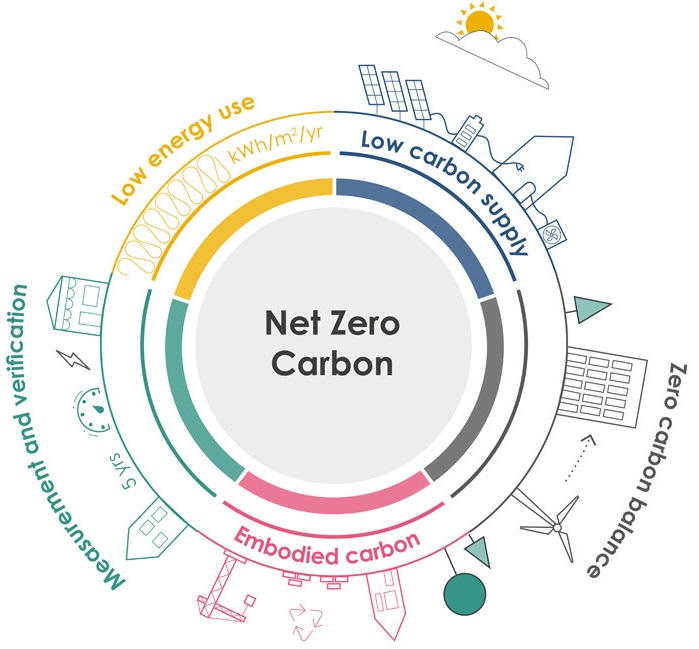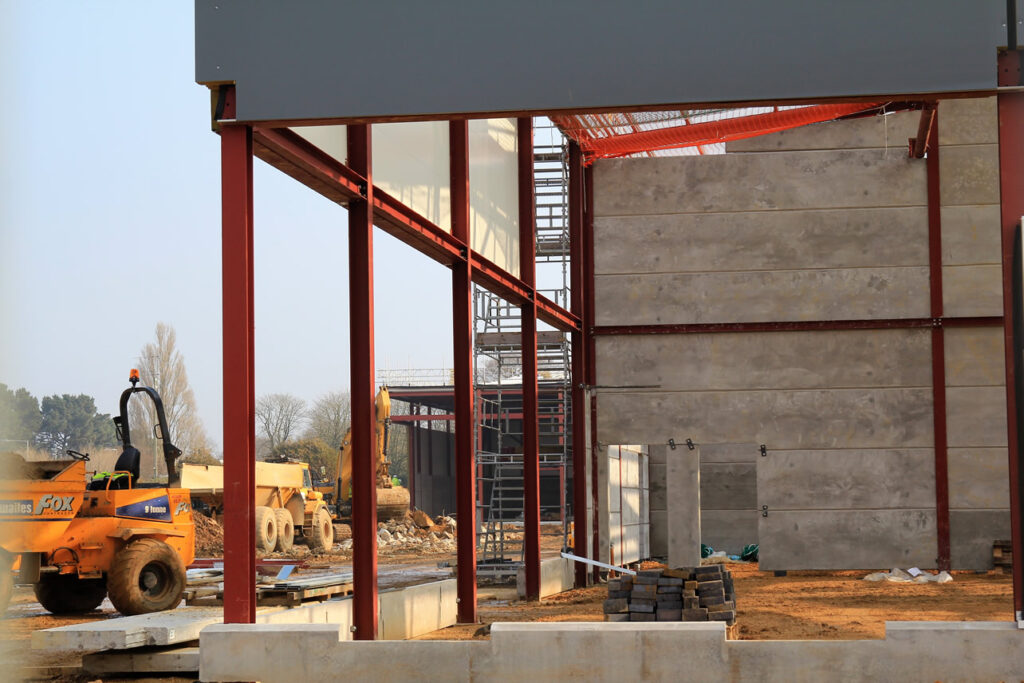Whole Life Carbon Assessments consider the carbon emissions from both the construction and use of a building over its entire lifespan.
Although we have been measuring operational emissions from buildings for some time (i.e the impact of occupying and operating a building), Whole Life Carbon Assessments give us much better understanding of the impact of those emissions already ‘built in’. These embodied emissions can contribute 40-70% of total emissions in a new building.
What is a Whole Life Carbon Assessment?
A Whole Life Carbon Assessment (WLCA) is a crucial process that evaluates a building’s carbon emissions throughout its entire lifecycle. It considers the carbon footprint from the construction phase to the building’s end-of-life, including every stage in between. By focusing on both embodied and operational carbon, a WLCA ensures a comprehensive understanding of a building’s total environmental impact.
Whole Life Carbon emissions include those operational emissions from regulated and unregulated energy use, and embodied carbon. Embodied carbon covers the carbon emissions from:
- Raw material extraction
- Manufacture of products
- Transport of materials
- Construction
- Maintenance, repair and replacement
- Demolition and disposal (see table at bottom of page)
How Does Whole Life Carbon Assessment Work?
Assessing Embodied Carbon
The assessment process begins with an analysis of the materials and methods used in construction. This stage evaluates embodied carbon, which includes the emissions produced during the extraction, manufacturing, and transportation of building materials.
Evaluating Operational Carbon
The operational carbon, emitted during the building’s use, is also assessed. This step considers energy consumption for heating, cooling, and lighting, among other factors.
Examining the End-of-Life Phase
The final stage examines the end-of-life phase, assessing the emissions from demolition, disposal, and recycling. The data collected from all these stages provide a clear picture of the building’s overall carbon footprint.
Benefits of Conducting a Whole Life Carbon Assessment
Conducting a WLCA offers numerous benefits. It helps in identifying carbon hotspots, enabling the implementation of strategies to reduce emissions. Additionally, it supports compliance with environmental regulations and enhances the building’s marketability by showcasing its sustainability credentials.
Moreover, by opting for materials with lower embodied carbon and improving energy efficiency, a WLCA can lead to significant cost savings over the building’s lifetime.
Our Approach to Whole Life Carbon Assessment
Guidance & Benchmarking
Whole Life Carbon assessments are guided by the RICS Whole life carbon assessment for the built environment’ Professional Statement (November 2017) document. This guide was developed to standardise whole life carbon assessments and provides specific guidance on the methodology outlined in EN 15978. As a result, the objective of a WLCA is to ensure carbon impacts are mitigated throughout a project’s lifecycle. Furthermore, the reporting should allow future comparisons of results and enable benchmarking and target setting.
At present, two primary benchmarks are available—the benchmarks provided within the RICS Professional Statement and those recommended by LETI (London Energy Transformation Initiative). These benchmarks allow clients to see how their buildings perform in comparison.
It is stated by the RICS guidance that it is mandatory to include substructure and superstructure in the assessment. Additionally, facilitating works, finishes, building services, and external works can also be included, provided the design team confirms the necessary information.
Life Cycle Stages
The tables below outline the scope of a WLCA and refer to the emissions associated with different life cycle stages. According to RICS guidance, it is mandatory to include Stages A1-A5, B4, and B6 within an assessment.

London Plan Requirements
The Greater London Authority (GLA) sets it’s own guidance around Whole Life Carbon. Policy SI2 of the London Plan 2021 requires that planning applications include a Whole Life Carbon assessment. This must show a calculation of WLC emissions and demonstrate how these emissions have been reduced throughout the planning and design phases. While an assessment is supported and encouraged for all major applications, it is mandatory for all developments referable to the Mayor. These typically include:
- Schemes of more than 150 residential units
- Development over 30 metres in height outside the City of London
- Development on Greenbelt or Metropolitan Open Land
- All applications, whether outline, detailed, or hybrid
A WLCA should be submitted at the following stages:
- Pre-application (where relevant)

- Planning application submission (i.e., RIBA Stage 2/3)
- Post-construction (i.e., prior to occupation of the development). Generally, it would be expected that the assessment would be received three months post-construction.
Generally, the GLA requirements follow the RICS Professional Statement as outlined above. However, some differences exist in the GLA requirements, such as the reporting of operational carbon emission factors and the use of TM54 assessments for non-residential operational carbon.
Circular Economy Statements
A move away from the current linear economy, where materials are used and then discarded, is necessary. In a circular economy, materials are retained in their highest value for as long as possible before being re-used and recycled, thereby minimising waste.
The circular economy principle focuses on the more efficient use of materials, which, in turn, leads to financial efficiency.
According to London Plan Policy SI7, a Circular Economy Statement must be produced in alignment with the energy strategy for the site and with the WLCA. Build Energy can produce this in tandem with your WLCA where required.
Contact Us for Expert WLCA Services
To learn more about how our Whole Life Carbon Assessment services can benefit your project, contact us today on 0330 055 34 05 or email us at be@buildenergy.co.uk. Our team is ready to assist you in achieving your sustainability objectives and reducing your building’s carbon footprint.
